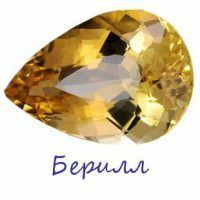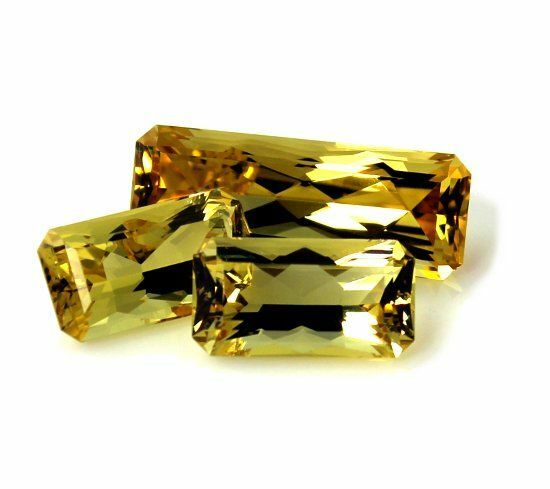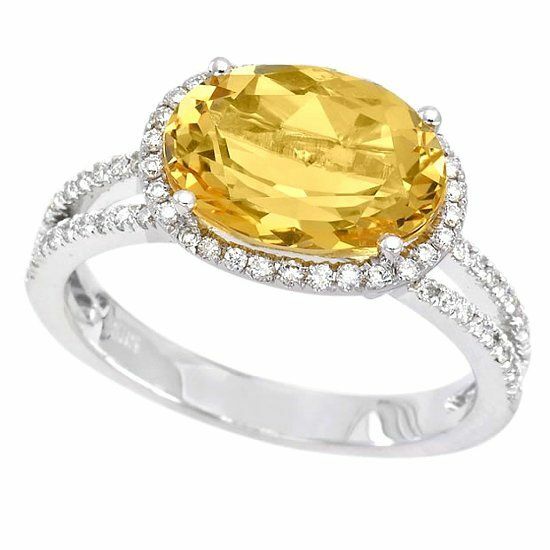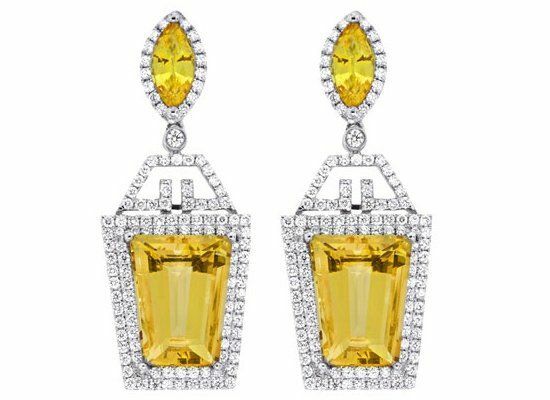
The unique properties of beryl and the amazing colors of this beautiful stone continue to fascinate humanity for more than one century in a row. Some varieties of beryl, such as emerald and aquamarine, are among the most rare expensive stones in the world, and red bixbit is valued above diamonds.
- history stone
- mineral Description
- beryl
- chemical composition and physical properties of the stone
- beryllium deposits
- Medicinal properties of mineral
- magical properties of beryl
- Beryl and zodiac
- Application Gem
- Interesting facts about
- stone How to distinguish natural beryl counterfeiting
- Stone care
- Photos of stone beryl and its products
History of the stone
- The first mention of beryl dates back to the 3rd century BC.Ancient Greek scientist and philosopher Theophrastus gave an accurate description of this mineral in his scientific works. In those days, beryl was actively used by ancient masters as an excellent ornamental material.
- As proof of this, archaeologists discovered a beryl necklace, made no later than the 4th century BC.In addition to jewelry craft, beryl was often used in the glyptic.
- Mention of beryl is also found in the "Izbornik Svyatoslav", dated 1073, and in works written by ancient Greek writers and scholars. Much is written about beryl and in Latin.
- Even in the Bible there is a specific mention of beryl. In this sacred book, it is described as one of the eight stones used in the construction of the foundation of Heavenly Jerusalem.
- The peak of its popularity of beryl was found in the Middle Ages, the mineral was often used in decorating various objects of church use. He served as a crystal and a popular ornamental material. In the Middle Ages, prints, rings, pendants and beryl earrings were in great demand. A colorless beryl was used in the manufacture of optical glasses.
- In 1537, between the Spaniards and the Indians, the ruthless war for precious beryl began, which many historians would later call "The Emerald War."
Description of mineral
Scientists still do not agree on the origin of the name of this mineral. There are several versions of the appearance of the name "beryl":
- Long since some varieties of beryl were considered "cat's eye".Therefore, there is an opinion that the name of the mineral comes from the Sanskrit word "vidala", which means "cat".
- According to A. Vasiliev, the Latin and Greek names of beryl are from the Sanskrit word "vaidurya", which means "very far".The scientist explains this by the fact that in ancient times stones were brought from behind the sea.
- N. Kuzansky in his works pointed out that the word "beryl" originated from the German word "brille"( glasses) and explained this by the fact that even in the Middle Ages, various lenses were made of colorless beryl.
Beryl is a colorless mineral and has a unique crystal transparency. But due to various impurities in nature, there are colored varieties of this beautiful stone, which are poured with gently blue, rich blue, lemon and even bright red hues.
Due to the unique transparency of the gem in the stone, even the lightest shades appear brightly, which made it so popular.
The most expensive varieties of beryl are emerald and aquamarine.
to contents ^Varieties of beryl
Variety of colors of varieties of beryl can vary from blue to bright shades depending on the quantitative content and chemical composition of impurities.
In nature, there are the following varieties of beryl:
- Aquamarine is a beryl, the shade of which varies from gently blue to transparent bluish-green. It is one of the most expensive varieties of mineral.
- Emerald - beryl, whose crystals have a unique dense green and grassy-green hue. Its price depends on the color saturation.
- Vorobyevit - beryl of a refined violet-pink color. This type of beryl is often called morganite or bixbit.
- Heliodor is a beryl, named after the Greek god Sun, because the mineral has a beautiful golden yellow color.
- Noble beryl - a variety of stone, with different shades of green. In contrast to emeralds in their composition, vanadium and chromium are absent.
- Red emerald - its unique color, this species resembles the berries of red gooseberry. The crystals of the "red emerald" do not exceed 5 cm in height.
- Mashish-beryl or maxix-aquamarine is a mineral with a beautiful sky-blue color. The color of this variety of beryl is unstable - under the influence of ultraviolet rays the stone acquires a yellowish-brown hue.
- Goshenit is a colorless mineral in which there are no iron impurities. Due to this feature, upon irradiation, the goshenite remains colorless.
- Rosterite is a beryl with a gently pink tinge. In its composition has a high content of lithium and sodium.
- Black beryl is a stone of a unique black color. Its unique coloring of the mineral was obtained through microinclusions from black spinel. True, the coloration appears only in the central part of the mineral, closer to the faces of this beryl has a bluish tinge.
- Scandium beryl - a mineral, which includes scandium, and the crystals look like elongated columns.
- Purple-red pepsottaite is one of the new varieties of beryl. In nature, the mineral is found in the form of tabular crystals. It was first discovered in 2003 in Madagascar.
Chemical composition and physical properties of stone
The chemical composition of beryl is beryllium and aluminum silicate. The formation of beryl crystals is characterized by a pneumatolytic( with the participation of gases) origin in high-temperature veins. With this formation, beryl is associated with wolframite, topaz, molybdenite and cassiterite.
Chemical formula of beryl: Al2 [Be3( Si6O18)].
Its basic composition includes:
- beryllium oxide( BeO) - 14%;
- aluminum oxide( Al2O3) - 19%;
- silica( SiO2) - 67%.
According to its species, beryl refers to annular silicates. In nature, beryl is colorless and has a glassy sheen.
Its hardness on the Mohs scale is from 6.5 to 8 units, and the density varies between 2.61-2.91 g / cm3.
Various impurities in the composition of beryl give the mineral unique shades. Thus, iron impurities give the stone green, yellow and blue tones, while the admixtures of manganese, lithium, and cesium stain the mineral in pale pink and red colors. Literally, 1-1.5% of iron oxide converts colorless beryl to a unique blue aquamarine, and 0.3-0.4% chromium or vanadium gives the stone a rich green color and turns it into an emerald.
to contents ^Beryl deposits
Deposits of beryl are known throughout the globe.
- In Russia, minerals are mined in the Southern and Middle Urals, Primorsky Krai, Chukotka, Altai, Transbaikalia and Sakha-Yakutia.
- Ukraine is famous for its noble beryls.
- Crystal clear stone samples are found in Italy, Finland, Bulgaria and the UK.
- Beryl is mined in Kazakhstan, China, Tajikistan, Pakistan, Afghanistan, as well as in Madagascar, Kenya, Tanzania, Namibia, Sri Lanka and South Africa.
- Colombia, Brazil, Mexico and the USA are famous for their excellent beryls.
- The most valuable samples are mined in Australia.
The healing properties of the mineral
The healing properties of beryl have been used extensively since ancient times. Ancient healers believed that due to their unique properties, the stone facilitates toothache and migraine, and also avoids:
- omission of the uterus;
- of bladder diseases;
- of ovarian diseases;
- liver disease;
- of hepatitis;
- of bronchial diseases;
- of stomach diseases.
Besides this, ornaments with beryl help to cure intestinal diseases, and also alleviate back pain.
to contents ^The magical properties of beryl
Beryl amazes with a variety of its magical properties.
- It is believed that decorations with this beautiful mineral bring luck and give their owner charm and charm.
- Beryl helps you find the right solution and streamline your thoughts.
- Jewelery with a crystal helps to maintain clarity of mind and peace of mind.
- Beryl "repels" negative energy, so in the families of the owners of the stone quarrels are extremely rare.
- The stone promotes mutual understanding between parents and children.
Gem contributes:
- to the achievement of scientific discoveries;
- strengthening the mind;
- solving complex tasks.
Beryl and zodiac signs
Beryl is often associated with the elements of water, so Pisces and Cancers mineral brings luck and guaranteed success in all endeavors.
Beryl calves help to expand horizons, and Gemini get rid of laziness.
Sagittarians and Scorpions for a long time to wear ornaments with beryl are not recommended, it can contribute to a nervous breakdown.
to the table of contents ^Application of the gem
Due to its prevalence and chemical composition, beryl is widely used.
- It is actively used in jewelry business.
- Some specimens of beryl adorn private collections and are museum exhibits.
- Beryl serves as an ornamental material in the manufacture of small crafts, seals and various carvings.
- In the industry, opaque beryl is used to produce beryllium oxide.
Interesting facts about the stone
- In ancient times, beryl was often used by shamans, because they believed that a mineral could enhance their gift of clairvoyance. For example, they believed that the hoopla turned out of beryl helps in dealing with the afterlife, and dragon figurines instill fearlessness into the army.
- The most expensive and rare type of beryl is red bixbit, its cost exceeds even the price of the highest quality diamond.
- The Museum of the Mining Institute( Russia) has an incredibly beautiful beryl. Its color is poured in a sunny-green tint. This magnificent specimen weighing 2.5 kg was found in the Urals in 1828.
- In 1964, in Madagascar, opaque beryl was found, the total weight of which was 379.5 tons.
How to distinguish natural beryl from counterfeit
Beryl, like many precious stones, is often forged. Of course, different varieties of beryl have different properties, but there are some peculiarities of all types of beryl that will help distinguish a fake:
- Natural stone has an exceptional transparency and characteristic glass shine.
- Transparent beryl crystals are characterized by pleochroism( color change).
- Quite often, beryl has various natural inclusions in the form of "chrysanthemums" or "snow marks".
- A colorless beryl has a strong dispersion( refraction of light).After a special treatment by the cabochon in the minerals, the optical effects of the "cat's eye" and "stars" are observed.
- And most importantly: all varieties of beryl are resistant to saline solutions and acids.
If you find the above signs in the stones, there can be no doubt, before you - natural beryl.
to the table of contents ^Care for the stone
Beryl is a solid stone, and unlike other minerals it does not need careful care.
However, like any jewel stone, a mineral does not like long exposure to direct sunlight, so the ornaments with beryl are best kept in a well-closed case and preferably wrapped in a soft cloth.
Clean the stone best not more than once a month with a soft brush and warm soapy water. After cleaning, do not forget to wipe the gem dry.
to the table of contents ^Pictures of beryl stone and its products



